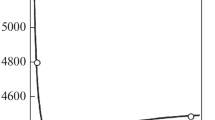Abstract
The evaporating thin film region is an extended meniscus beyond the apparent contact line at a liquid/solid interface. Thin film evaporation plays a key role in a highly efficient heat pipe. A detailed mathematical model predicting fluid flow and heat transfer through the thin film region is developed. The model considers the effects of inertial force, disjoining pressure, surface tension, and curvature. Utilizing the order analysis, the model is simplified and can be numerically solved for the thin film profile, interfacial temperature, meniscus radius, heat flux distribution, velocity distribution, and mass flow rate in the evaporating thin film region. The prediction shows that while the inertial force can affect the thin film profile, interfacial temperature, meniscus radius, heat flux distribution, velocity distribution, and mass flow rate, in particular, near the non-evaporating region, the effect can be neglected. It is found that a maximum velocity, a maximum heat flux, and a maximum curvature exist for a given superheat, but the locations for these maximum values are different.













Similar content being viewed by others
Abbreviations
- A :
-
constant (J)
- C T :
-
constant
- dx :
-
differential length (m)
- f :
-
friction factor, \({f = \frac{{4\tau_{w}}}{{\frac{1}{2}\rho_{l} u^{2}}}}\)
- h lv :
-
latent heat of vaporization (J/kg)
- k :
-
thermal conductivity (W/m K)
- K :
-
curvature (m−1)
- \({\dot{m}}\) :
-
mass flow rate (kg/s)
- p :
-
pressure (N/m2)
- P R :
-
reference pressure (N/ m)2
- q :
-
heat transfer (W)
- q′′:
-
heat flux (W/ m2)
- Re :
-
Reynolds number, \({Re = \frac{{\rho_{l} u\delta}}{{\mu_{l}}}}\)
- t :
-
time (s)
- T :
-
temperature (K)
- u :
-
velocity in the x-direction (m/s)
- \({\bar{u}}\) :
-
mean velocity in the x-direction (m/s)
- v :
-
velocity in the y-direction (m/s)
- x :
-
coordinate (m)
- y :
-
coordinate (m)
- δ:
-
film thickness (m)
- δ0 :
-
non-evaporating film thickness (m)
- μ:
-
viscosity (N s/m2)
- ρ:
-
density (kg/m3)
- σ:
-
surface tension (N/m)
- τ:
-
shear stress (N/ m2)
- d :
-
disjoining
- l :
-
liquid
- lv :
-
liquid–vapor interface
- n :
-
node value
- v :
-
vapor
- w :
-
wall
References
Demsky SM, Ma HB (2004) Thin film evaporation on a curved surface. Microscale Thermophys Eng 8:285–299
Hanlon MA, Ma HB (2003) Evaporation heat transfer in sintered porous media. ASME J Heat Transf 125:644–653
Jiao AJ, Riegler R, Ma HB, Peterson GP (2005) Thin film evaporation effect on heat transport capability in a grooved heat pipe. Microfluid Nanofluid 1:227–233
Khrustalev D, Faghri A (1995) Heat transfer during evaporation on capillary-grooved structures of heat pipes. ASME J Heat Transf 117(3):740–747
Ma HB, Peterson GP (1997) Temperature variation and heat transfer in triangular grooves with an evaporating film. J Thermophys Heat Transf 11(1):90–97
Potash M, Wayner PC (1972) Evaporation from a two-dimensional extended meniscus. Int J Heat Mass Transf 15:1851–1863
Schonberg JA, DasGupta S, Wayner PC (1995) An augmented Young–LaPlace model of an evaporating meniscus in a microchannel with high heat flux. Exp Thermal Fluid Sci 10:163–170
Stephan PC, Busse CA (1993) Analysis of the heat transfer coefficient of grooved heat pipe evaporator walls. Int J Heat Mass Transf 35(2):383–391
Sultan E, Boudaoud AB, Amar M (2005) Evaporation of a thin film: diffusion of the vapour and Marangoni instabilities. J Fluid Mech 543:183–202
Wayner PC, Kao YK, LaCroix LV (1976) The interline heat transfer coefficient of an evaporating wetting film. Int J Heat Mass Transf 19:487–492
Author information
Authors and Affiliations
Corresponding author
Rights and permissions
About this article
Cite this article
Ma, H.B., Cheng, P., Borgmeyer, B. et al. Fluid flow and heat transfer in the evaporating thin film region. Microfluid Nanofluid 4, 237–243 (2008). https://doi.org/10.1007/s10404-007-0172-5
Received:
Accepted:
Published:
Issue Date:
DOI: https://doi.org/10.1007/s10404-007-0172-5




